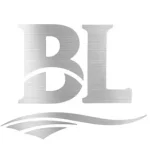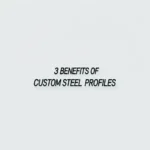The Middle East represents one of the most dynamic markets for galvanized steel pipes, driven by rapid infrastructure development, urbanization, and industrial expansion. Exporting galvanized steel pipes to this region requires a strategic understanding of market demands, technical specifications, regulatory standards, and logistical challenges. This guide provides a comprehensive overview for manufacturers and exporters aiming to tap into this lucrative market.


Market Demand and Key Applications
The demand for galvanized steel pipes in the Middle East is fueled by multiple sectors:
– Construction: High-rise buildings, commercial complexes, and residential projects rely on galvanized pipes for structural frameworks, scaffolding, and HVAC systems.
– Oil & Gas: Corrosion-resistant pipelines for upstream, midstream, and downstream operations, particularly in Saudi Arabia, UAE, and Qatar.
– Water and Wastewater Management: Municipal water supply networks and desalination plants prioritize galvanized pipes for their durability and anti-corrosive properties.
– Agriculture: Irrigation systems in arid regions benefit from the pipes’ longevity.
Notable projects driving demand:
– NEOM (Saudi Arabia)
– Dubai Urban Plan 2040
– Qatar National Vision 2030
Technical Specifications and Standards
To meet regional requirements, exporters must ensure their products comply with international and local standards:
– Coating Thickness: Minimum 85 microns (ASTM A123) for heavy-duty applications.
– Pipe Dimensions:
– Diameter: ½ inch to 8 inches (common for construction); up to 24 inches for industrial use.
– Wall Thickness: Sch 40 (standard) to Sch 80 (high-pressure).
– Material Grade: ASTM A53 (Type E or S) or API 5L for oil/gas.
– Certifications:
– ISO 9001 (Quality Management)
– ISO 14001 (Environmental Compliance)
– SASO (Saudi Arabia) or ESMA (UAE) for local approvals.
Pro Tip: Offer customizable solutions (e.g., threaded ends, grooved couplings) to align with project-specific needs.
Competitive Advantages of Galvanized Steel Pipes
- Corrosion Resistance: Zinc coating extends lifespan to 20–50 years, even in harsh desert climates.
- Cost-Effectiveness: Lower maintenance and replacement costs compared to alternatives like PVC or stainless steel.
- Fire Safety: Non-combustible, ideal for high-temperature environments.
- Eco-Friendly: 100% recyclable, meeting regional sustainability goals (e.g., UAE’s Green Agenda 2030).
Regulatory and Logistics Considerations
- Import Regulations:
- Saudi Arabia mandates SASO CoC (Conformity Certificate).
- UAE requires ESMA registration for certain products.
- Documentation:
- Commercial invoice, packing list, bill of lading, certificate of origin, and material test reports (MTRs).
- Logistics:
- Shipping Routes: Major hubs include Jebel Ali (UAE) and Dammam (Saudi Arabia).
- Lead Time: 30–45 days from China to the Gulf, depending on port congestion.
- Storage: Recommend anti-corrosive packaging (e.g., plastic caps, moisture-proof wraps) to prevent damage during transit.
Challenges and Mitigation Strategies
- Price Volatility: Hedge against fluctuating zinc prices by locking in contracts.
- Local Competition: Differentiate through value-added services like on-site technical support.
- Cultural Barriers: Partner with local distributors familiar with regional business practices.
Marketing and Sales Strategies
- Digital Presence: Optimize for Middle Eastern search terms (e.g., “الأنابيب الصلب المغلفة بالزنك” in Arabic).
- Trade Shows: Participate in events like The Big 5 Construct Saudi or Gulfood Manufacturing.
- B2B Platforms: List on TradeKey or Saudi Business Machines for visibility.
For exporters looking to establish a foothold in the Middle East, partnering with a reliable manufacturer is critical. Baoli, a leading Chinese steel producer, offers custom galvanized steel pipes tailored to Middle Eastern standards. With ISO-certified production lines, competitive pricing, and end-to-end logistics support, Baoli ensures seamless delivery for projects of any scale. Explore their range of solutions at [Baoli’s website] to meet your market-specific requirements.
Exporting Galvanized Steel Pipes to the Middle East: A Market Guide — This article provides a practical buyer‑focused overview with specifications, selection tips, and on‑site considerations. Explore related topics: blog.
Key Specifications and Standards
- Standards: ASTM / EN / JIS (e.g., ASTM A240/A36, EN 10088/10025, JIS G4304/G3131).
- Surface options: 2B, BA, No.4, HL, mirror; galvanized (electro / hot‑dip).
- Processing: hot‑rolled, cold‑rolled, annealed & pickled, welded or seamless.
- Typical services: slitting, shearing, cut‑to‑length, drilling, beveling, deburring.
- Documentation: MTC, CO, packing list with net/gross weight and heat numbers.
Typical Applications
Construction, machinery, automotive, energy, enclosures and fencing, food equipment (for stainless), and general fabrication. Match grade and finish to corrosion, strength, and appearance requirements.
Selection Guide
- Use certified material with Mill Test Certificate (MTC).
- Confirm standards (ASTM/EN/JIS) and tolerances per drawing.
- Match surface finish to application (2B/BA/No.4/galvanized).
- Specify dimensions and acceptable deviation upfront.
- Plan packaging and corrosion protection for transit.
Processing, Packaging and Logistics
We adopt edge protection, waterproof wrapping, rust‑inhibiting paper, fumigated pallets, and strapping suitable for sea freight. Loading photos and weight lists are provided for each shipment.
FAQs
Q: What lead time can I expect?
A: Typically 7–15 days ex‑works for standard sizes; custom processing may extend the schedule.
Q: Can you provide cut‑to‑size service?
A: Yes. We slit, shear, cut, drill, bevel and deburr to drawing to reduce waste and speed installation.
Q: How do you ensure quality?
A: Incoming inspection, process control, and final inspection with traceable heat numbers; third‑party inspection is available.
Q: Do you support small trial orders?
A: We support pilot quantities with consolidated shipping to control cost.
All values are typical and for guidance only; confirm with the datasheet and purchase order before production.
Related products: view details.
Related products: view details.





